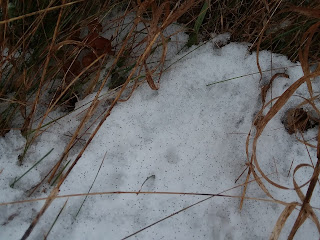Snow Fleas
This is my nineteenth Vermont winter. I've decided that’s
enough years for me to assert that January 2020 was too warm. It’s supposed to remain
below freezing around the clock, except for a brief thaw when everyone washes
their cars. Temperatures that stay in the teens or 20s make for beautiful, clean
snow, tundra-like dirt roads (easy to navigate), and best of all, no mud—and NO
BUGS. In January I get a break from giving the dogs their twenty-bucks-a-pop
flea and tick medicine, and I normally don’t have to inspect them (or myself) for ticks
after a walk.
This year, though, we saw 30s and 40s, meaning slush, mud,
and even bugs. It felt like March. On my walks in the snow I noticed the snow
fleas. I remember being kind of freaked the first time I ever saw them up here.
I kept seeing black dirt on the snow on warmer days, which didn’t make sense
because I was nowhere near a road. When I looked more closely, the dirt was
jumping. FLEAS! They looked just like in that apartment in Virginia. But weren’t
fleas supposed to be dormant in the winter?
The World Wide Web informed me that the fleas I saw are
called snow fleas but are not actual fleas. They aren’t even technically
insects, though they do have six legs (IDK, it has to do with their mouths). They
are a harmless, primitive little critter that will absolutely not bite the dogs
or infest my house. I constantly remind myself of this knowledge as I walk
through swarms of them on these warmer days, the tiny neurotic voice in my head whispering,
“I sure hope these are SNOW fleas and not FLEA fleas.”
Fleas jump using their legs and feet, but snow fleas,
which are actually called “springtails,” catapult themselves into the air using
a tail-like appendage, the action captured here in slow motion (skip to 1:00
unless you also want to watch them take a bath). It’s pretty cool.
The “tail” is called a furcula, which is Latin for “forked
part” but sounds more scientific. (Another type of furcula is
a wishbone. The more you know.)
Springtails are simple, ancient creatures that will outlive
us all. In the meantime, rest assured they are completely harmless to humans, pets,
and buildings.



Comments
Post a Comment